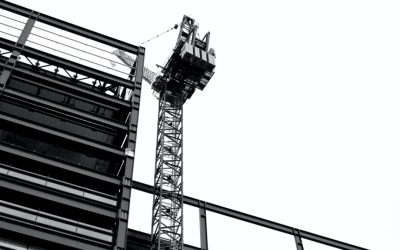
What is required of a Landlord to ensure vacant possession is provided on lease commencement?
Background
The Queensland Court of Appeal (QCA) recently considered in Bagata Pty Ltd & Anor v Sunstorm Pty Ltd [2024] QCA 17 whether an expert determination that decided an industrial tenant had a right to vacant possession at the commencement date was valid. The QCA’s decision provides us with an important warning on handing over premises to tenants in subpar conditions, commentary on the construction of lease terms and highlights a key risk regarding alternative dispute resolution clauses.
What happened?
Bagata Pty Ltd and Runner Pty Ltd (the Landlord) were the owners of a property in Murarrie QLD, which was leased (the Lease) to Sunstorm Pty Ltd (the Tenant). As part of the Lease, the Tenant received an incentive in the form of early access prior to the commencement date of 1 July 2022.
The Landlord, however, failed to remove significant equipment from the premises including 7 industrial presses, 3 compressors and over 50 pallets of stock by the commencement date, which resulted in a dispute between the parties on the question of whether the remaining goods had to be removed.
The terms of the Lease stipulated that a dispute was required to be resolved by expert determination. The questions before Mr Thirgood (the Expert) were as follows:
whether the Landlord was required to provide vacant possession of the premises at the commencement date;
whether vacant possession of the premises had been delivered to the Tenant; and
whether the Tenant’s manufacturing activities fell within the permitted use under the Lease.
The Expert made a determination that the Tenant was entitled to vacant possession and the Tenant’s activities fell within the permitted use. The Expert’s determination was intended to be conclusive and binding “in the absence of manifest error” per the Lease. The Landlord brought a case in the Queensland Supreme Court to set aside the determination and was unsuccessful.
The final decision
The Landlord brought an appeal to the QCA which was dismissed with costs for the reasons outlined below.
The findings
Manifest error
The Landlord argued that the primary judge was wrong in concluding that the Expert was allowed to arrive at an erroneous construction of the Lease as long as the error was not clear and obvious.
However, the QCA did not agree with this argument. The QCA agreed with the primary judge who concluded a manifest error had to be both “demonstrated and apparent”, and that an error of law was not sufficient to constitute a “manifest error” unless the error was apparent or obvious from a reading of the reasons.
Vacant possession
The Landlord argued that the Tenant did not have a right to vacant possession and delivering vacant possession to the Tenant at the commencement date was not a term of the Lease. In addition, the Landlord argued that the Tenant had accepted the condition of the premises on an ‘as is/where is’ basis.
In defining the Tenant’s right to vacant possession, the QCA relied on Lord Greene MR’s judgment in Cumberland Consolidated Holdings Ltd v Ireland where it was held that the right of vacant possession was ultimately the “right to actual unimpeded physical enjoyment”. The QCA found that the term “vacant possession” as used by the Expert meant only the absence of the Landlord’s property from the premises.
In regard to the delivery of vacant possession to the Tenant, the QCA reasoned that the Lease in following ordinary construction of contract principles should be constructed from what a reasonable businessperson would understand the terms to mean. The QCA agreed with the Expert that the clause stating the Tenant “acknowledges that the Premises and the Landlord’s Property were in Good Repair” simply meant that the Tenant accepted the condition of what was being leased, instead of providing the Landlord with any right to store their property on the premises.
In regard to the ‘as is/where is’ provision, the QCA upheld the Expert’s finding that the clause of the Lease acknowledging the Tenant accepts the Premises in an ‘as is/where is’ condition ‘simply acknowledges that the Tenant accepts the condition of what is being leased’, rather than affirming the Landlord’s right to store property on the premises. The QCA noted that the condition of the property being leased is distinct from the contents on the property of the Lease, and the Landlord’s property obstructed the usability of the premises, rather than its condition.
Permitted use
The reference schedule of the Lease defined the permitted use as “Industrial – warehouse and ancillary office”. The Landlord argued that the ‘warehouse and ancillary office’ component limited the meaning of ‘Industrial’, and therefore prevented the Tenant’s installation and use of equipment at the premises.
The QCA found that the Landlord’s argued construction of the permitted use would remove all meaning from the word ‘Industrial’. This would be inconsistent with the early access licence granted in the Lease which provided for the installation and operation of certain plant and equipment. It was also established that the Landlord knew that the Tenant was in the business of manufacturing artworks, and it would make no commercial sense for the Landlord and the Tenant to agree to a permitted use that prevented such manufacturing.
Final thoughts
The case highlights three important takeaways.
1. The inclusion of alternative dispute resolution clauses by landlords must be considered carefully. Where an unfavourable decision has been made, unless the error is truly blatant, it is likely that courts will continue to uphold the decision. Additionally, in states such as New South Wales and Victoria, leases may have legislated dispute resolution procedures which can produce more consistent dispute results.
2. Subject to the terms of the lease, landlords should be wary about the provision of premises to a Tenant where there is significant or obstructive property left on the premises as this may not constitute vacant possession. Clauses designed to protect the landlord such as specifying a premises is to be provided on an ‘as is/where is’ basis speaks only to the condition of the premises and not its contents, and is unlikely to assist with the determination of whether the premises is delivered with vacant possession.
3. Maintaining specificity in the permitted use of a lease is key to protect landlords from tenants using their premises for a prohibited use and to protect tenants from accidentally using the premises for a prohibited use. Where there is a broad permitted use, the court will interpret it to make commercial sense, which is generally in its plain meaning.
Generally, the case serves as a reminder that careful lease drafting is important in order to define both landlord’s and tenant’s obligations and intentions. Had the lease contained clauses expressly allowing the landlord to maintain its property on the premises rather than a broad as is/where is clause, it is unlikely that this dispute would have occurred.
Other Articles of Interest
Feel free to browse our other news items.
If you find something particularly interesting and you’d like us to expand upon any of the points we raise, please reach out to us.
Back to news items.









